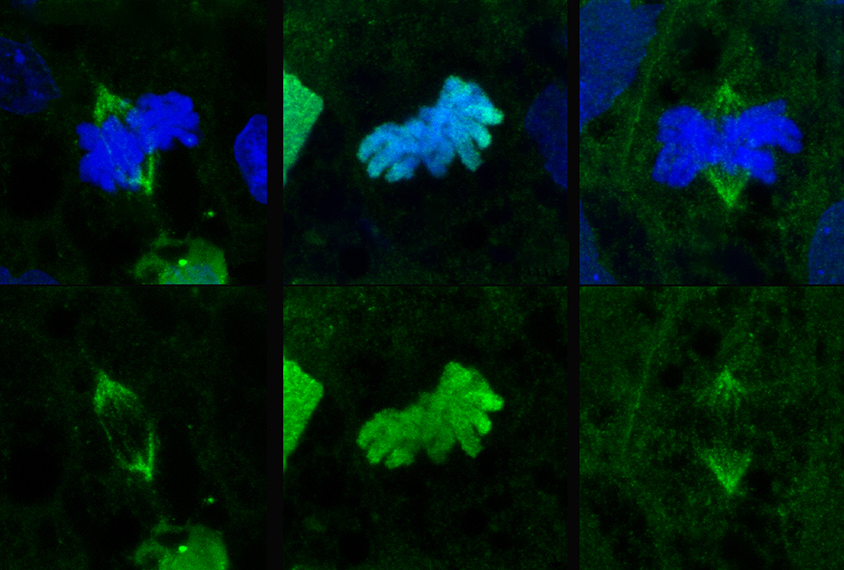Editor’s Note
The preprint mentioned in this story has since been published in Development.

Five autism-linked genes widely known as chromatin regulators appear to also shape the cell’s internal skeleton.
The preprint mentioned in this story has since been published in Development.
Five genes thought to be linked to autism for their function in shaping the DNA-protein complex called chromatin may contribute to the condition in another way, a new preprint reports. All five may also help form cell skeleton structures called microtubules.
These genes are “doing double duty,” says lead researcher Helen Willsey, assistant professor of psychiatry and behavioral sciences at the University of California, San Francisco.
Exactly how microtubules might contribute to autism is unknown, but they are involved in many key developmental processes, from cell division and proliferation to the maturation of neuronal signaling. “My hope for this paper is that it will spur people to begin to think about microtubule biology in the context of autism,” Willsey says.
Researchers generally associate these five genes — ADNP, CHD8, CHD2, POGZ, and SUV420H1/KMT5B — with their chromatin role.
The new findings are “a fundamental wake-up call to the community to really think broadly about what these genes could be doing, other than just, in this case, regulating gene expression,” says Tomasz Nowakowski, assistant professor of anatomy at the University of California, San Francisco, who was not involved in the work. That knowledge is crucial for developing effective interventions for autism traits, he adds.
W
illsey began wondering about the connection between chromatin and tubulin, the protein that makes up microtubules, a few years ago. She and her colleagues discovered that the proteins encoded by two autism-linked genes, DYRK1A and KATNAL2 — both considered synaptic genes — localize near a tubulin-rich structure, called the mitotic spindle, in dividing frog embryos. Hampering DYRK1A disrupted the cells’ multistage division process, which depends on microtubule formation and breakdown.Those results sent Willsey down a tubulin rabbit hole in the literature, where she encountered several chromatin regulators moonlighting as tubulin regulators.
“That was a big ‘aha’ moment for me,” she says. “I think microtubules need better PR.”
The five chromatin genes Willsey’s team examined in the new work also localized to the spindle in frog embryos, suggesting they, too, could play a tubulin role.
The researchers then made frog embryos that overexpress a version of CHD2 that carries either of two autism-linked mutations. One of the mutations affected the protein’s ability to localize to the spindle, but the other did not. They posted their findings on bioRxiv in December and are currently testing whether the mutations affect cell division.
“Variants could be affecting protein function in different ways, with different mechanisms,” Willsey says.
F
inally, the team looked at a list of more than 600 proteins that bump elbows with components of the mitotic spindle and related microtubule structures in a human cell line, according to a 2019 study. Of these, 13 also belong to a group of 81 proteins that are strongly linked to autism and expressed in those cells.“That was strong evidence that microtubule biology carries broader relevance to autism,” she says. What’s more, six of the genes are classified as chromatin modifiers, suggesting a specific crossover between those two functions.
“It’s a very nice opening of an interesting field we should look more into,” says Illana Gozes, professor emerita of clinical biochemistry at Tel Aviv University in Israel, who was not involved in the study.
ADNP, one of the genes in the new work, binds to a microtubule-related protein, Gozes’ lab showed in 2004. Expanding the work to other autism-linked genes and testing drugs that affect microtubules in animal models of autism could yield more clues about how microtubule biology might contribute to autism, she says.
Willsey’s lab is overexpressing or disrupting these five genes in frog and human cells and then imaging the living cells in a dish to better understand their functions, Willsey says. “I think the next big important question is: What about microtubules would lead to something like autism?”





